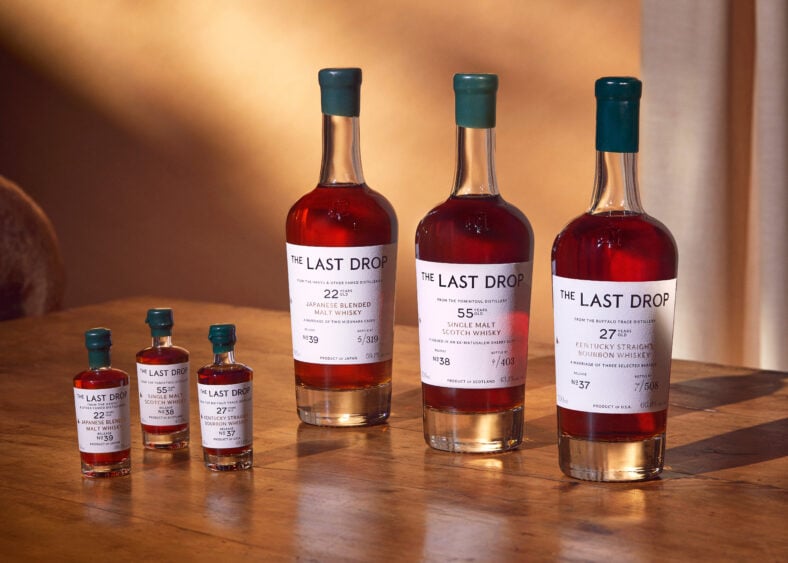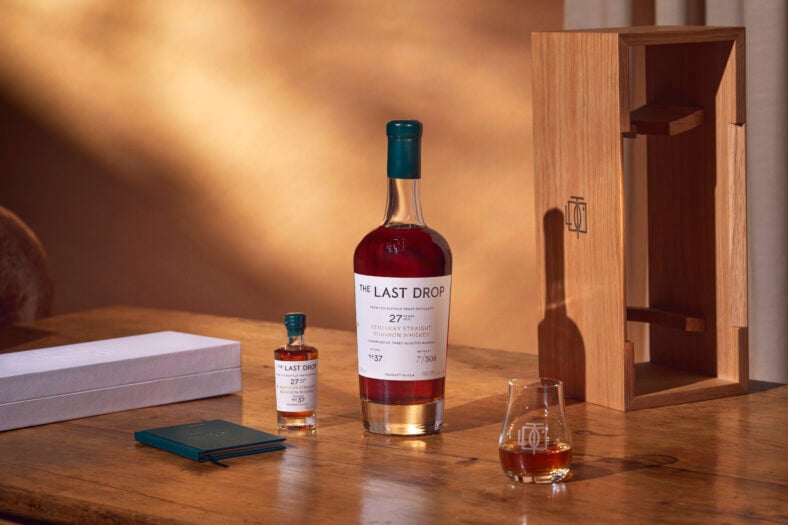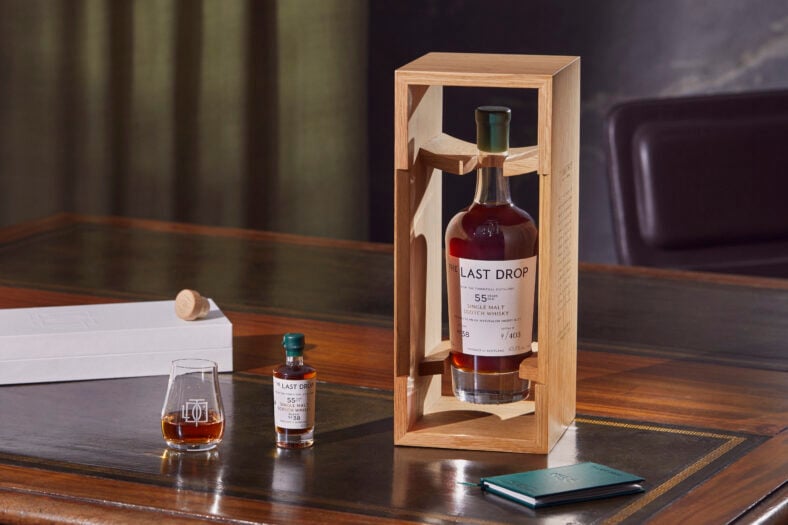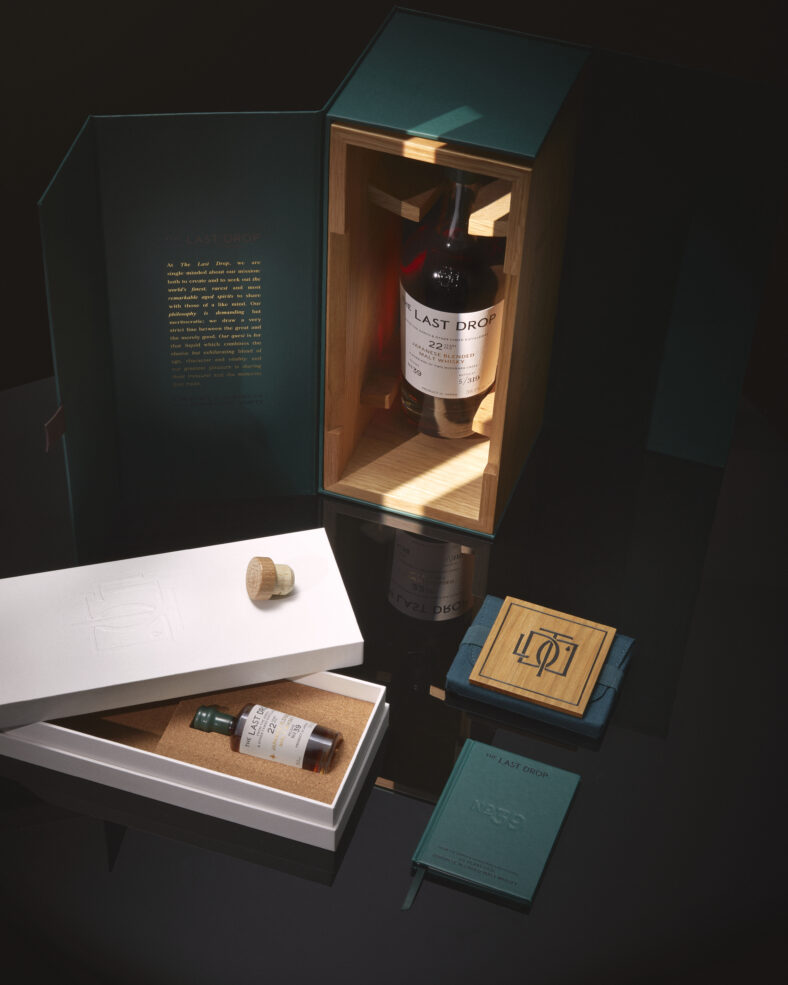
Sazerac’s The Last Drop Distillers has announced its 2025 Collection, and this year’s offerings are some of the most impressive in recent memory. The all-whiskey collection includes three bottles: a 27-year-old Buffalo Trace Bourbon, a 55-year-old Scotch single malt, and a 22-year-old Japanese whisky from a distillery shuttered at the turn of the millennium. The bottle likely creating the most buzz is an extra-extra-old Buffalo Trace bourbon. Last Drop Release No. 37 is a 27-year-old bourbon using one of the distillery’s rye mashbills, which means it’s likely an extreme edition of Eagle Rare, Blanton’s, Stagg, E.H. Taylor, or Buffalo Trace itself—not Weller.

The proof is surprisingly disciplined: 121.8, uncut and unfiltered. Tasting notes from The Last Drop indicate a lot of seasoned oak, dark fruit, and spices on the nose, and a woody, tannin-forward caramel flavor on the palate. Notes of leather and dried fruits indicate that, though this whiskey will definitely drink like it’s nearly 30, it’s certainly still vibrant.The only downside is the one-two punch of a $10,500 price tag and a small run of just 508 bottles, which makes sense, given that the three barrels used to create it were filled in 1995, 1996, and 1997. It’s hard not to feel this one’s already going to be out of reach unless you’ve already got the right contacts. I’m almost afraid to speculate what the secondary market prices will do to this one.
Surprisingly, The Last Drop Release No. 38 is twice the age of the Buffalo Trace bourbon and closer to half the price, making it the “bargain” of the group. No. 38 is a 55-year-old Tomintoul single malt—a “sister cask” to a release from last year’s collection. The whisky was distilled and casked in April of 1969, and it seems to have spent the entirety of its life in “ex-sherry butts and refill sherry hogsheads,” which means that it should have a nice balance between sherry’s bolder and more subtle flavors.

This single malt spent two years marrying in a third form of sherry cask—an ex-Matusalem sherry butt — before the remaining liquid managed to fill 430 bottles. The whisky’s proof is a little on the low side at 86.2, but that’s still a bit higher than the average low end of Scotch proofing, and unlike bourbon, Scotch can tend to lose strength as it ages—at least in certain circumstances. Tasting notes for Release No. 38 tease a deep amber color, rich red fruits, toasted almonds, and warm toffee on the nose. Palate notes highlight licorice, rich caramel, baking spices, and a number of fruits, with a hint of pineapple in the form of upside-down cake. At $6,950, this is probably one of the best values for a 50-and-up single malt I’ve seen in the last couple of years, but The Last Drop can be surprisingly affordable for, you know, the curated spirits collection of literal treasure hunters.
As for The Last Drop Release No. 39, it has to be the most interesting of the trio. This 22-year-old Japanese whisky was produced from just two casks distilled and filled at a ghost distillery called Hanyu. The malt whiskies inside were distilled in the year 2000 and were probably among the last drops that the distillery produced before it closed that same year. What makes this expression exceptionally rare, though, is that they spent their entire life in mizunara casks, rather than European or American oak. Mizunara is a Japanese oak species that is rarer and less ideal for barrel making in the “construction” sense, but it makes some incredible flavors once you’ve got the barrel finished. Tasting notes immediately key in on one of mizunara’s most telling flavors and aromas: sandalwood. The earthy, woody spice is present in the aroma alongside “vanilla and marzipan,” and on the palate, those spices balance against banana, coconut, and red berries.

With apologies to the trio’s two other spirits, it’s possible that this one is the star of the collection, not the least of which for its lively profile but also because it was blended by Helen Mulholland, Sazerac’s Irish master blender. Mulholland, along with director/founding family member Rebecca Jago and Louise McGuane of JJ Cory Irish Whiskey created one of the best Irish whiskeys of the decade with Release No. 32. And, of course, it would be the case that this Japanese whisky (bottled at 118.2 percent ABV) would also produce the fewest bottles. At only 319 for the worldwide market, it doesn’t really matter if you have the $5,500 to buy a bottle—it matters if you can find one.
G. Clay Whittaker is a Maxim contributor covering lifestyle, whiskey, cannabis and travel. His work has also appeared in Bon Appetit, Men’s Journal, Cigar Aficionado, Playboy and Esquire. Subscribe to his newsletter Drinks & Stuff for perspectives on drinks, and stuff.